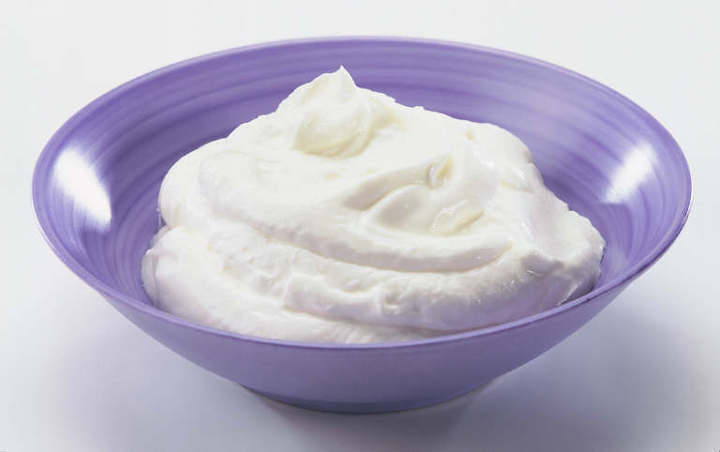The popularity of Greek yogurt has increased substantially recently and you may be wondering why. Is Greek yogurt better for you than natural yogurt? Natural yogurt is the simplest and purest form of yogurt and it is strained twice after fermentation, which means there is still some liquid left in the end product. Greek yogurt, however, is strained three times, making it thicker and more intense in flavor. Keep on reading to find out more about the differences between Greek yogurt and natural yogurt.

Greek Yogurt vs. Natural Yogurt: Nutrients
1. Protein
Greek yogurt helps to keep you fuller for longer as it is high in protein. One 6-ounce serving of Greek yogurt usually contains 15 to 20 grams of protein, similar to that of 2 to 3 ounces of lean meat, which appeals to vegetarians who do not always get enough protein from other foods. Natural yogurt contains only half of this amount, meaning you may feel hungrier sooner.
2. Carbohydrates
If you’re on a low-carb diet, you may wan to opt for Greek yogurt. With only 5 to 8 grams per serving, Greek yogurt contains half of the amount of carbs as natural yogurt (13 to 17 grams per serving). Additionally, in the straining process, some of the milk sugar (lactose) of Greek yogurt is removed, making it a better choice for the lactose intolerant. Still, all yogurts are rich in carbs if they are added with sugar or any sweetening agent, so always read the label and choose the yogurt with less added sugar.
3. Fat
Be cautious of the fat content of Greek yogurt. Fage’s full-fat Greek yogurt contains 16 grams of saturated fat. For those on a 2000 calorie diet, this is 80 percent of your daily allowance! However, Dannon’s full fat natural yogurt contains less saturated fat (only 5 grams). Read nutrition labels carefully as saturated fat can raise your cholesterol levels, increasing the risk of heart disease. If you choose the former one of the pair of Greek yogurt vs. natural yogurt, then stick to a low fat or fat free version.
4. Sodium
Greek yogurt contains, on average, half of the amount of sodium as natural yogurt (there are low sodium natural yogurts available), with an average serving containing 50 milligrams. As too much salt can increase blood pressure and the risk of heart problems, the federal governments 2010 dietary guidelines recommend Americans have no more than 2,300 milligrams of sodium per day. Anyone who is over 50, African American or has hypertension, diabetes or kidney disease should have 1,500 milligrams per day.
5. Calcium
Greek yogurt and natural yogurt both contain a decent amount of calcium, with natural yogurt providing 30% of the governments recommended daily amount and Greek yogurt providing 20% (some is lost through the straining process). Load up on milk, seeds and almonds to get even more calcium.
6. Calories
Plain, fat free versions of Greek yogurt and natural yogurt have a similar amount of calories in per serving; however with added sugars, they both have an increased number of calories.
Which One to Choose
Greek yogurt is popular for anyone following a vegetarian or vegan diet as it has a high level of protein. However, it is lower in calcium and is thicker in texture, which isn’t something everyone likes. Both of these types of yogurt are healthy options, so it depends on personal preference.
Greek Yogurt vs. Natural Yogurt for Cooking
The biggest difference between Greek yogurt and natural yogurt is the thickness and amount of protein. Greek yogurt tends to have a thicker texture and contains more protein, which can be better for baked goods as the watery consistency of natural yogurt can cause a tougher end product. Similar to sour cream, Greek yogurt moistens baked products, making them tender and with a better texture. When using yogurt for baked goods, choose either a Greek yogurt or an unflavored plain yogurt. If the recipe specifically says add natural yogurt, this may be because Greek yogurt is too thick. In this case, either add natural yogurt or water down the Greek yogurt with a little milk. As Greek yogurt can be more expensive than natural yogurt, if you’re strapped for cash, consider buying natural yogurt instead or try making some Greek yogurt yourself.
The above shows the differences between Greek yogurt vs. natural yogurt. Why not see for yourself by having a go at two delicious recipes? The banana oat muffins use Greek yogurt, while the French Onion Dip uses natural yogurt.
1. Banana Oat Greek Yogurt Muffins
 Ingredients
Ingredients
- 225g Greek yogurt
- 200g medium ripe bananas
- 2 large eggs
- 160g rolled oats
- 50g brown sugar
- ½ tsp baking powder
- ½ tsp baking soda
- 85g chocolate chips
Instructions
- Preheat the oven to 400°F (204°C) and spray a muffin tray.
- Place all ingredients (except chocolate chips) into a food processor until the mix is smooth and creamy.
- Add the chocolate chips and stir in by hand.
- Pour the batter into the muffin tray, filling each section ¾ full. As an option add some chocolate chips to the top of each muffin.
- Bake in the oven for 15-20 minutes. Poke a toothpick into the center of a muffin and ensure it comes out clean. If so it is cooked.
- Allow the muffins to cool for 10 minutes before eating.
2. French Onion Dip with Natural Yogurt
Ingredients
- 1 tbsp extra virgin olive oil
- 4 cups chopped onions
- ¾ tsp salt
- 14 ounce tin of beef broth (reduced salt) or ¾ cups of mushroom broth
- 2 tsp onion powder
- 2 tbsp white vinegar (distilled)
- 1 cup low fat sour cream
- 1/3 cup natural yogurt
Instructions
- Heat oil in a large pan over a medium heat. Add the onions and salt, stirring occasionally for 6 to 8 minutes or until brown. Add the broth and simmer for 10 to 20 minutes until the liquid has almost evaporated. Then reduce the heat and cook for 5 to 8 more minutes. Stir in the onion powder and vinegar and cook for another 2 minutes until the liquid has evaporated. Take the pan off the heat and let it cool for 20 minutes.
- Mix the natural yogurt and sour cream in a bowl, and stir in the onion mixture once it’s cooled. Store in the fridge and chill for 30 minutes to mix the flavors.
